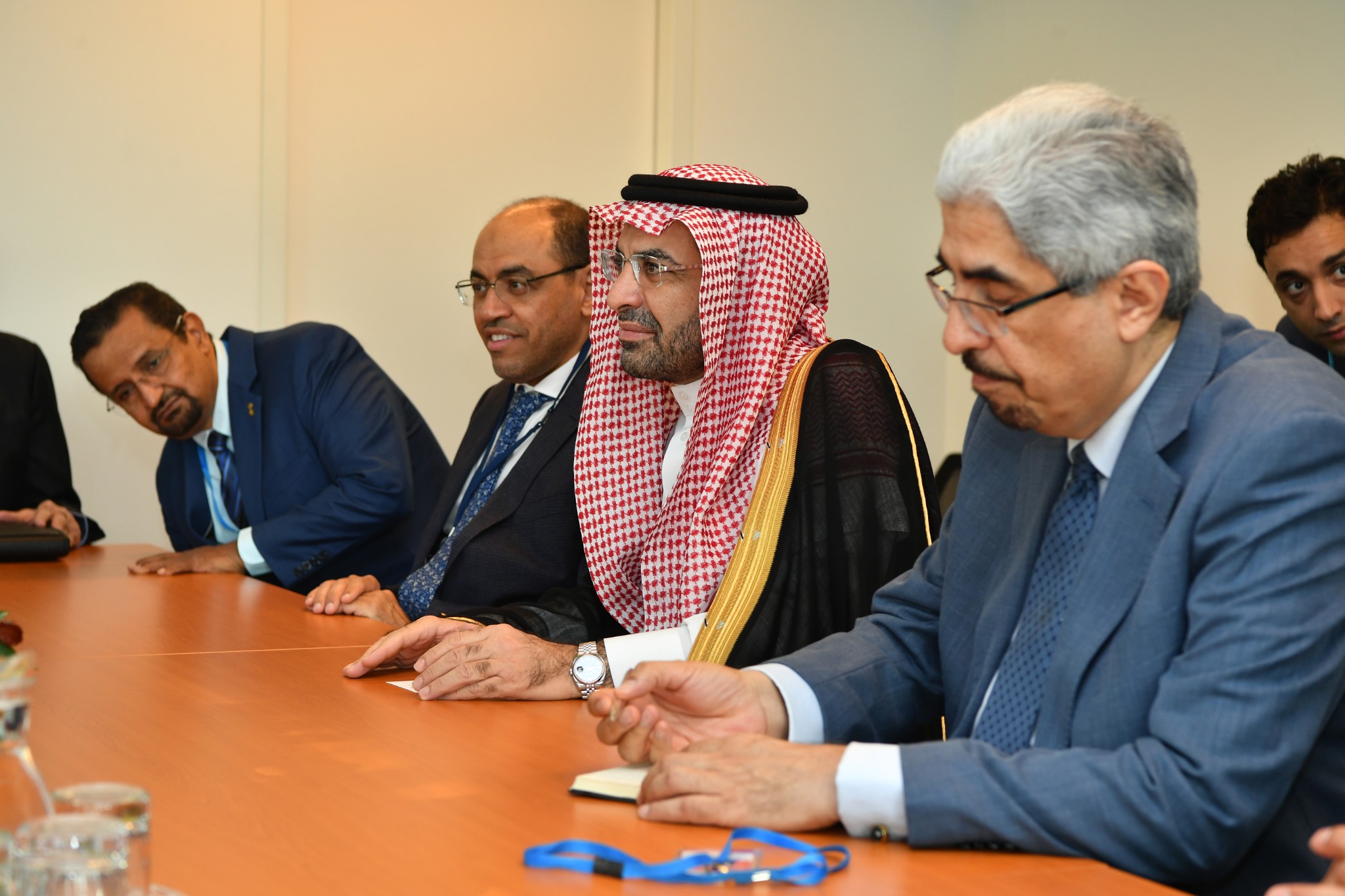 2019 bilateral meeting between Saudia Arabia and IAEA (IAEA / Dean Calma)
2019 bilateral meeting between Saudia Arabia and IAEA (IAEA / Dean Calma)
Potential Energy: Exploring China-Saudi Arabia Nuclear Cooperation
The Guardian recently released news of a Chinese report, prepared for Saudi Arabia, on the potential for uranium mining in three Saudi deposits. If the information is accurate and utilized, this mining could give rise to a dramatically expanded nuclear program, civilian usage or otherwise. While unverified, the report comes in the wake of intelligence agency analyses expressing their concern for bilateral cooperation between the two countries.
Continued China-Saudi Arabia collaboration raises questions of not merely the objective of Saudi nuclear aspirations, but also larger implications for the future of the Middle East, U.S.-Iran nuclear relations, and U.S.-China relations as tensions in the Gulf rise to a new fever pitch.
A Brief History of the Saudi Nuclear Program
In 1988, Saudi Arabia became a non-nuclear weapon state party to the Nuclear Nonproliferation Treaty (NPT), giving the International Atomic Energy Agency (IAEA) authority to verify the peaceful usage of nuclear material. But Saudi Arabia has also implemented the Small Quantities Protocol (SQP), which waives inspections for states with “minimal or no nuclear material.” As the IAEA attempts to tighten safeguards, Saudi Arabia’s insistence on the SQP while openly pursuing an atomic energy program raises questions about intent.
Adding to these questions is Crown Prince Mohammed bin Salman’s 2018 public statement that Saudi Arabia would develop a nuclear weapon in the event that Iran does. Saudi Arabia has also resisted the IAEA’s Additional Protocol, which expands the agreeing country’s IAEA inspections as a further commitment to nonproliferation. Furthermore, in 2010, Saudi Arabia established the King Abdullah City for Atomic and Renewable Energy (K.A.CARE), which continues work on an experimental reactor outside of Riyadh.
Although the country currently has no nuclear power plants, Saudi Arabia initiated the Saudi National Atomic Energy Project (SNAEP) as part of Vision 2030, a development plan with a primary goal of migrating away from a reliance on oil. The IAEA openly cooperates with any states interested in working with nuclear energy, which for Saudi Arabia has included a number of workshops and projects to assist in establishing infrastructure and regulation for a nuclear energy program.
U.S.-Saudi Arabia Nuclear Relations
Section 123 of the U.S. Atomic Energy Act of 1954 requires all U.S. significant civilian nuclear cooperation and sales of nuclear technology to be approved via what is known as a 123 Agreement. Saudi Arabia’s Gulf neighbor, the UAE, holds what has now been coined the “gold standard”: a 123 Agreement with a pledge to not enrich or reprocess uranium. In August, the UAE celebrated the opening of its nuclear power plant in Barakah as the first Arab country to do so. Although its 123 Agreement has still enabled the UAE to effectively pursue civilian nuclear energy, Saudi Arabia continues to push back on an agreement of its own.
In 2008, the U.S. and Saudi Arabia signed a Memorandum of Understanding to collaborate on civilian nuclear energy, and the Department of Energy has stated that the U.S. has been involved in Saudi 123 Agreement discussions since 2012. In 2011, Saudi Arabia announced its intent to build 16 nuclear reactors by 2030, which it updated to a timeline of the next 20 to 25 years. The country also accepted international bids to build two reactors, but the U.S. attempt to bid became controversial given the lack of a 123 Agreement.
Saudi interest in nuclear material raises concerns of an emerging Middle East nuclear arms race. It has notably caught the eye of the House Foreign Affairs Committee, whose members wrote to Secretary of State Mike Pompeo to inquire about Chinese-Saudi collaboration and whether the U.S. will continue to push Saudi Arabia toward more stringent IAEA agreements.
What’s China Got to Do With It?
This year, China and Saudi Arabia celebrate 30 years of diplomatic relations. China has helped Saudi Arabia with its ballistic missile program and is currently the biggest importer of Saudi oil, but analysts differ on whether the China-Saudi Arabia relationship is really a strategic partnership in addition to an economic one.
China-Saudi Arabia nuclear collaboration started with civilian cooperation agreements in 2012 and 2017, and nuclear and geological researchers on both sides have been collaboratively assessing Saudi Arabian uranium reserves. U.S. intelligence sources suggest that Chinese-Saudi cooperation has potentially yielded an undisclosed uranium yellowcake extraction facility, a troublingly rapid step toward eventual uranium enrichment. However, the Saudi Energy Ministry has categorically denied the existence of a facility of this kind.
Saudi Arabia has signed nuclear cooperation agreements with other countries, but China’s historical disinterest in U.S.-led nonproliferation protocols and a dramatic modernization of its nuclear arsenal raise red flags. Chinese and Saudi sources state that any nuclear cooperation is purely for peaceful purposes, but the lack of transparency is what worries nonproliferation experts the most.
Questions remain over not merely whether Saudi Arabia is cooperating with China to build an extraction facility, but also increased nuclear collaboration suggesting potential for weapons manufacturing. Amidst strained U.S.-China relations, strengthened bilateral China-Saudi Arabia cooperation could emerge as a decisive factor in the nuclear landscape of the near future.





